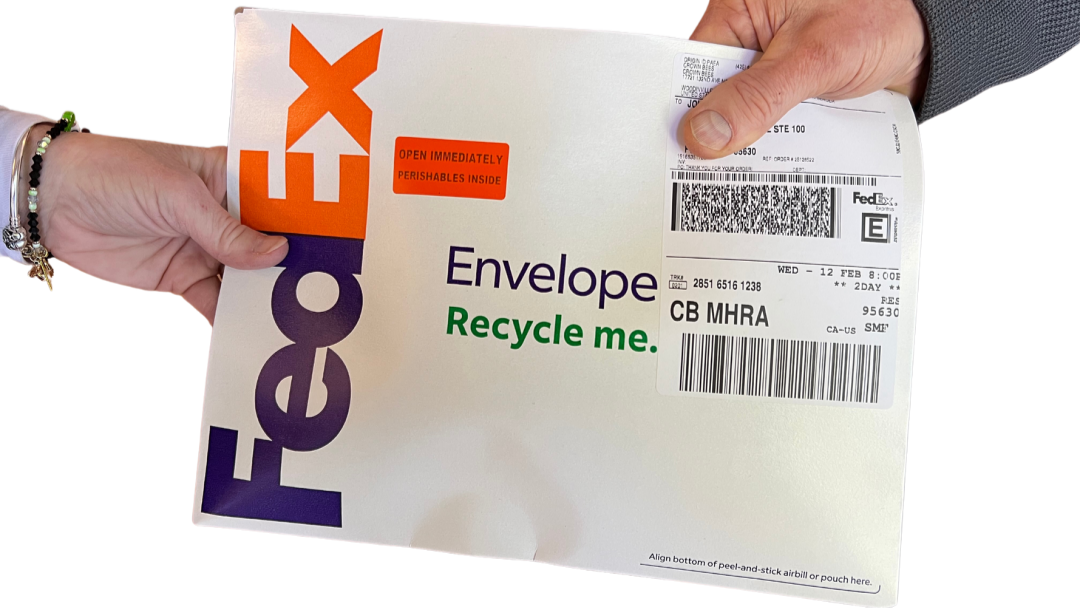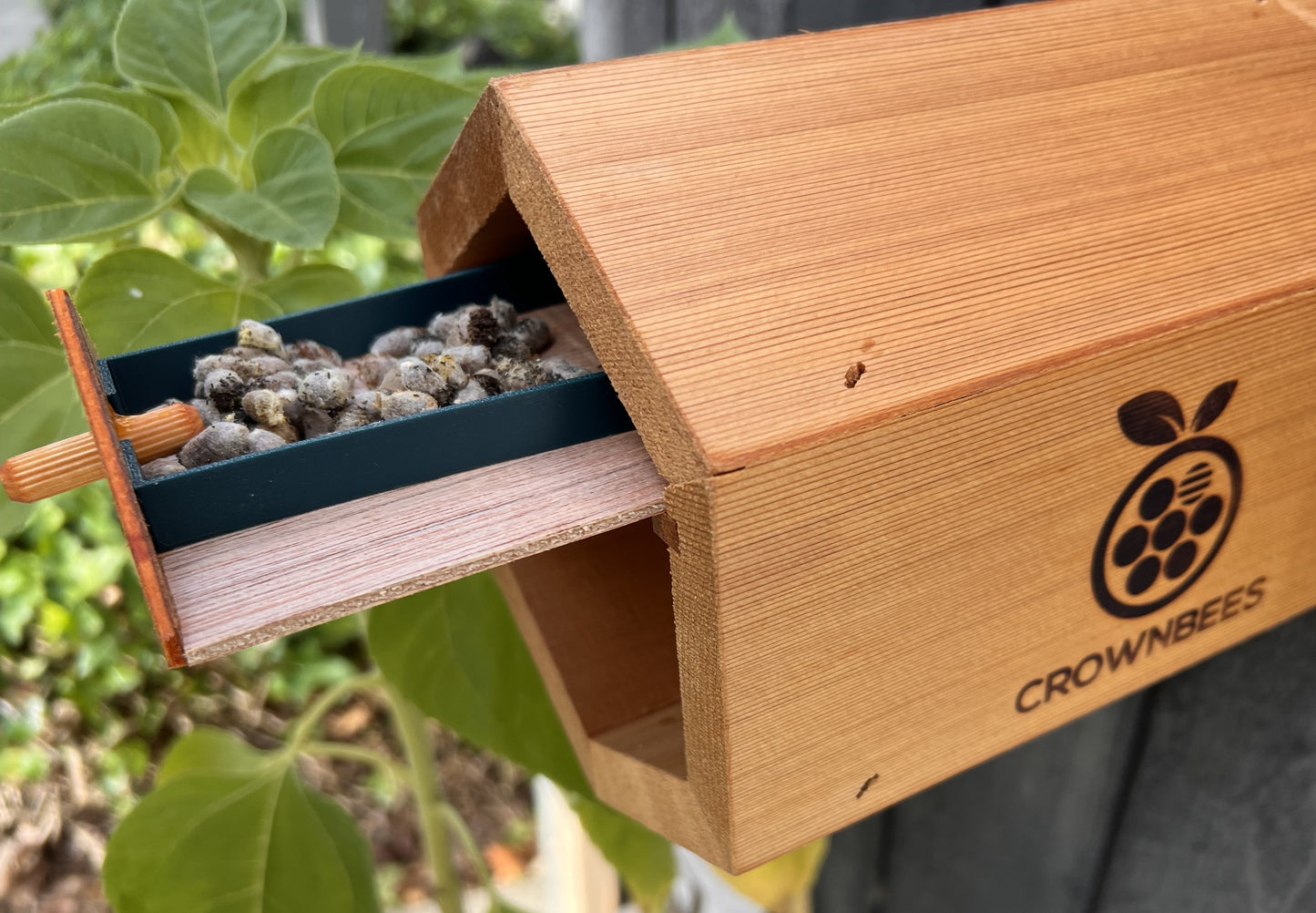Why Buy Mason Bees for Your Garden?
Many yards are missing pollinators. If you are looking to add bees to your garden, we're here to help!
Crown Bee's Mason bees have been raised across North America by gardeners who's efforts help ensure that gardens, orchards, and natural ecosystems thrive. They share their cocoons with us in the fall. We meticulously clean the Mason bee cocoons, carefully remove any pests, and give them a light box inspection to ensure their well-being and readiness for the coming season. Then, they are snuggled into our climate-controlled professional grade chillers for overwintering. In the springtime, we send them back to their eco-region. Bees acclimated to their local regions are far better pollinators.

To estimate when spring temperatures will hit the mid 50’s, search "average monthly temps [YOUR CITY]" online. After ordering, save the date on your calendar of your selected bee ship date.
Order anytime! Whether you’re purchasing a kit or just bee cocoons, you choose your shipping date. Hard goods ship quickly, while bees ship for free via FedEx 2Day in the U.S. and Canada Post in Canada.
For the health and safety of the bees, we ship on Mondays between February and April to avoid weekend delays.

If your bees have emerged and your yard and garden are ready, you can place them inside your bee house (see below). They’ll get to work straight away!
Keep your cocoons in the fridge until your yard and garden are ready. To prevent dehydration, store them in a HumidiBee or another breathable container. Loosely cover the container with a paper bag to shield cocoons from light, and place it in the crisper drawer if space allows.
When your garden is ready, transfer the cocoons to your cocoon hatchery or a small, breathable container that protects them from birds, sun, wind, and rain. Place this container inside your bee house and get ready to watch nature in action!
🐝 Bee Patient! Depending on the weather, it can take up to three weeks for your bees to emerge—but the wait is worth it!
Since we ship our bees via FedEx 2-Day (Canada Post in Canada), they may arrive before your bee house is set up or before spring fully blooms. If that happens, don’t worry! You can safely keep your bees in hibernation by storing them in the fridge until your garden is ready. While in this dormant state, they may appear lifeless, but they’re perfectly safe until daytime temperatures reach 50-55°F and flowers are in bloom.
To prevent dehydration, store cocoons and any emerged bees in a HumidiBee or another breathable, escape-proof container. Add a cotton ball or sponge soaked in a mixture of 1 tsp white sugar and 1 tsp water, replacing it when dry. Keep the container covered loosely with a paper bag to shield the bees from light, and place it in the crisper drawer if possible. Any emerged bees should be released as soon as possible!

Keep your cocoons out of the weather to ensure their safety. To protect them from rain, wind, or birds, use a cocoon hatchery and a Bird Guard. Place the cocoons into the hatchery and position it on top of the nesting material at the back of the bee house. The bird guard slides onto the bee house, preventing birds from reaching the nesting materials and resting Mason bees.
To make it easier for the bees to locate the nesting material, spray Invitabee onto the nesting materials. This will help attract them and encourage them to check it out!
Extend your bee season by releasing half your cocoons first, then waiting a couple of weeks before releasing the rest. The consistent cold temperatures of your fridge help Mason bees conserve their fat stores, so they emerge strong and ready to forage!
If you choose to stagger your releases, be sure to include a mix of cocoon sizes each time. Larger cocoons house female bees, while smaller ones contain males—ensuring successful mating in both batches!


